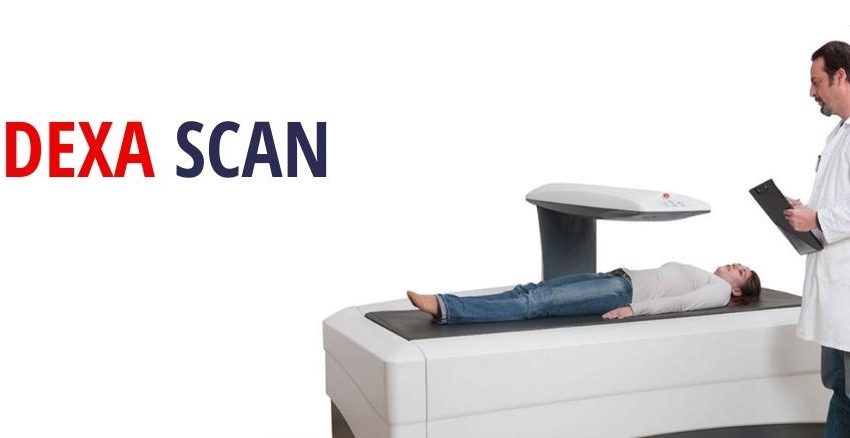Science of Strength: Understanding Dexa Scans
- Health & Fitness
 stevesmiths
stevesmiths- July 15, 2024
- 18

Unlock the secrets of your bone health with the revolutionary Dexa Scan. This cutting-edge technology has become an essential tool in diagnosing and monitoring bone density, playing a crucial role in preventing and managing osteoporosis and other bone-related conditions. In this article, we will explore the science behind Dexa Scans, their benefits, the procedure, and how they contribute to understanding and improving bone health.
What is a Dexa Scan?
Definition
A Dual-Energy X-ray Absorptiometry (Dexa) Scan is a medical imaging technique used to measure bone density. It provides detailed images of the interior structure of bones, helping healthcare professionals assess bone health accurately.
History
Dexa technology was developed in the late 20th century, revolutionizing the way bone density was measured. Before Dexa, bone density tests were less accurate and more invasive. The introduction of Dexa Scans provided a non-invasive, highly accurate method to evaluate bone health.
Purpose
The primary purpose of a Dexa Scan is to diagnose osteoporosis, a condition characterized by weak and brittle bones. Additionally, Dexa Scans are used to assess the risk of fractures, monitor the effectiveness of osteoporosis treatments, and evaluate bone health in various medical conditions.
The Science Behind Dexa Scans
How it Works
Dexa Scans work by using two X-ray beams at different energy levels to measure bone density. When these beams pass through the body, they are absorbed by bones and soft tissues to varying degrees. By measuring the difference in absorption, the scanner can calculate the density of the bone.
Technology Used
The equipment used for Dexa Scans includes a specialized X-ray machine and a computer. The X-ray machine emits the beams, while the computer processes the data to generate detailed images and measurements of bone density.
Accuracy and Precision
Dexa Scans are known for their high accuracy and precision. The dual-energy technique allows for precise measurement of bone mineral density, making it one of the most reliable methods for assessing bone health.
Benefits of Dexa Scans
Early Detection
One of the significant benefits of Dexa Scans is their ability to detect osteoporosis and other bone conditions at an early stage. Early detection is crucial for preventing fractures and managing bone health effectively.
Comprehensive Analysis
Dexa Scans provide a comprehensive analysis of bone density, offering detailed information about bone health. This data helps healthcare professionals make informed decisions about treatment and prevention strategies.
Non-Invasive Procedure
Dexa Scans are non-invasive, meaning there are no incisions or injections involved. The procedure is painless and requires minimal preparation, making it accessible to a wide range of patients.
Monitoring Progress
For individuals undergoing treatment for osteoporosis or other bone conditions, Dexa Scans are an essential tool for monitoring progress. Regular scans can track changes in bone density and help adjust treatment plans accordingly.
The Dexa Scan Procedure
Preparation
Before a Dexa Scan, patients are typically advised to avoid calcium supplements for 24 hours. Wearing comfortable clothing without metal zippers or buttons is recommended to ensure accurate results.
During the Scan
During the scan, the patient lies on a padded table while the X-ray machine passes over the body. The scan usually focuses on the lower spine and hips, as these areas are most commonly affected by osteoporosis. The procedure takes about 10 to 20 minutes.
After the Scan
After the scan, patients can resume their normal activities immediately. The results are typically available within a few days, and a healthcare professional will discuss the findings and any necessary next steps.
Who Should Get a Dexa Scan?
Risk Factors
Certain individuals are at higher risk for osteoporosis and should consider getting a Dexa Scan. These risk factors include age, gender, family history of osteoporosis, low body weight, and certain medical conditions.
Age and Gender
Postmenopausal women and men over the age of 70 are particularly at risk for osteoporosis. However, younger individuals with risk factors should also consider getting a Dexa Scan.
Medical Recommendations
Healthcare providers may recommend a Dexa Scan based on medical history, risk factors, and symptoms. It’s essential to follow medical advice and schedule a scan if recommended.
Interpreting Dexa Scan Results
Understanding Scores
Dexa Scan results are typically reported as T-scores and Z-scores. A T-score compares the patient’s bone density to that of a healthy young adult, while a Z-score compares it to individuals of the same age and gender.
Normal vs. Abnormal Results
A T-score of -1.0 or above is considered normal, while a score between -1.0 and -2.5 indicates low bone mass (osteopenia). A T-score of -2.5 or lower suggests osteoporosis. Z-scores are used to determine if bone density is unusually low for a specific age group.
Next Steps
Based on the results, healthcare providers may recommend lifestyle changes, medications, or further testing. Regular Dexa Scans may be advised to monitor bone health and treatment efficacy.
Conclusion
Understanding your bone health is crucial for a strong and healthy future. Dexa Scans provide a reliable, non-invasive method to assess bone density and detect conditions like osteoporosis early. By incorporating regular Dexa Scans into your healthcare routine, you can take proactive steps towards maintaining optimal bone health.
Frequently Asked Questions (FAQs)
-
What is the difference between a T-score and a Z-score?
- A T-score compares bone density to that of a healthy young adult, while a Z-score compares it to individuals of the same age and gender.
-
How often should I get a Dexa Scan?
- The frequency depends on individual risk factors and medical advice. Typically, postmenopausal women and men over 70 should have a scan every 1-2 years.
-
Is a Dexa Scan painful?
- No, Dexa Scans are painless and non-invasive.
-
How long does a Dexa Scan take?
- The scan usually takes about 10 to 20 minutes.
-
Can I eat or drink before a Dexa Scan?
- Yes, but you should avoid calcium supplements for 24 hours before the scan.
-
Are there any risks associated with Dexa Scans?
- Dexa Scans involve minimal radiation exposure and are generally considered safe.
-
How much does a Dexa Scan cost?
- The cost varies depending on location and insurance coverage. It’s best to check with your healthcare provider.
-
Do I need a doctor’s referral for a Dexa Scan?
- In most cases, a doctor’s referral is required, but it can vary by location and healthcare provider.
-
What should I wear to a Dexa Scan appointment?
- Wear comfortable clothing without metal zippers or buttons to ensure accurate results.
-
Can I get a Dexa Scan if I am pregnant?
- Dexa Scans are generally not recommended during pregnancy due to radiation exposure. Consult with your healthcare provider for alternatives.
